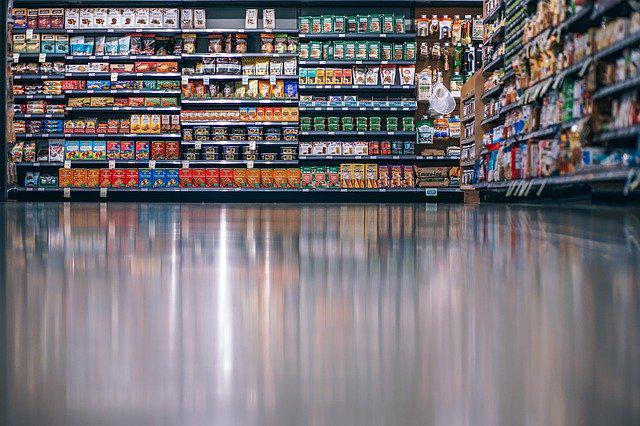COVID-19’s impact on how consumers perceive ‘clean’
2020-08-04 16:10:07
Even as food and beverage companies have gone to great lengths to clean up labels avoiding the inclusion of ingredients perceived as artificial, consumers continue to seek products perceived as natural. The “natural” label claim remains the most influential both when shopping and when purchasing food prepared outside the home, according to the International Food Information Council Foundation’s 2020 Food & Health Survey.
Natural is a more widely sought claim than non-GMO, organic, locally sourced, clean ingredients and sustainably sourced by a significant margin. But one issue marketers and product developers are watching now is how the coronavirus (COVID-19) pandemic may affect consumer purchasing patterns and their perception of what is clean.
Greg Stucky, chief research officer for InsightsNow, Inc., Chicago, a research consultancy, called the clean label trend a “phenomenon” and said it is continuing to grow. Mr. Stucky’s comments were made during a webinar presentation that was part of the Institute of Food Technologists’ ShIFT20 virtual meeting that replaced the canceled live event scheduled to take place in mid-July.
Global sales of clean label food products are expected to reach $180 billion in 2020, according to Euromonitor International. Citing data from Mordor Intelligence, Mr. Stucky said sales of clean label ingredients are projected to grow 6.75% annually to $51.1 billion by 2024. He added that the impact of COVID-19 on consumer purchasing patterns may push the ingredient sales figure higher.
COVID-19 also has shifted the consumer’s perception of clean beyond labels or products. Frequent handwashing and wearing face masks have made consumers consider the overall cleanliness of retail and foodservice operations.
“The focus on preparation and server hygiene is top of mind; however, consumers continue to maintain their focus on clean label for at-home as well as out-of-home purchases,” said Soumya Nair, director of marketing insights North America for Kerry, Beloit, Wis. “Clean label attributes, such as ‘all natural/100% natural,’ ‘made with real,’ will continue to help consumers prioritize their purchases. While the current focus is on food safety, clean label is a longer-term consumer goal. Nutrition and functional benefits such as lower sugar, gut health and immune support are also taking center stage amid COVID-19.”
Marge O’Brien, director, global market research and insights for Corbion, which has US offices in Lenexa, Kan., also sees consumer concern about hygiene and food handling as a trending issue.
“As news stories increased of manufacturing closures due to employees contracting the virus, so too did consumers’ concern about food handling procedures,” she said. “They want assurances that their food and drinks are being manufactured and prepared in the safest possible manner. One example is the declining in-store bakery sales in the US, where many products are typically sold in bulk-bins or open cases. To ease handling concerns, products are now being individually packaged or sold in plastic bags instead of open paper bags.”
COVID-19’s impact on clean label
In October 2019 and April 2020, InsightsNow conducted its International Health & Wellness Survey and captured consumer sentiment around a variety of trends, including clean label, before the pandemic started and when much of the world was living under mandated stay-at-home orders. Consumers surveyed as part of the research were from 10 countries: Brazil, Canada, China, France, Germany, India, Mexico, Turkey, the United Kingdom and the United States.
A group of consumers InsightsNow focused on were “clean label enthusiasts,” which InsightsNow defines as “forward-thinking primary shoppers.” These are people who say ingredients matter to them and affect what they buy. They are concerned there are too many chemicals in food, and they read the list of ingredients before buying products they haven’t tried before.
“Based on our research back in October 2019 we looked at the percentage of the population that was clean label enthusiasts around the world, and what you see is the US, Canada, UK, France and Germany were less mature in those particular markets. We have about a third of the population that are clean label enthusiasts.”
InsightsNow identified three global insights about the clean label trend. For example, culture matters. The specificity of how to communicate clean label is becoming more culture-centric as COVID focuses markets locally.
Pre-COVID, in markets like the United States, Canada, the UK, Germany and France, clean label enthusiasts were influenced by claims such as sustainably farmed, no artificial flavors, minimally processed, simple, fresh and no antibiotics. Mr. Stucky said the five markets are still in the free-from stage of clean label when compared to Brazil, China, India, Mexico and Turkey, where consumers tend to be much more specific about the clean label claims that influence them.
“COVID made this even more intense,” he said.
The second insight generated by InsightsNow is ingredients really matter, Mr. Stucky said. Terms like fresh, natural, no artificial flavors and organic are getting a boost amid the pandemic.
“All the basics of clean label, if you will, are increasing, are important to people and getting a little more of a boost from COVID,” Mr. Stucky said.
The third insight identified in the survey is nutrition beats taste in some instances, which means some consumers are more willing to make taste tradeoffs to get the nutrition they desire. Data from the survey showed that of the 10 countries surveyed, in nine of them the percentage of consumers seeking healthy ingredients was higher than those consumers seeking ingredients that taste good. The United States was the only country where taste trumped health.
“This is a good indicator we are on the move,” Mr. Stucky said. “Taste is still important, but nutrition can often trump taste.”
The finding led InsightsNow to ask if people were given a choice between a product with “amazing taste” but suboptimal ingredients or one with “so-so taste” but amazing ingredients, would they make the tradeoff?
“What we found is, yes, half or more of the population would make that tradeoff (and choose so-so taste but amazing ingredients),” Mr. Stucky said.
Beyond clean label enthusiasts, many consumers have embraced indulgent products during the pandemic. A survey of more than 400 consumers by DuPont Nutrition & Biosciences, New Century, Kan., a division of DuPont, found 25% of consumers said they are buying more ice cream and 33% said they are buying more snacks and sweet snacks.
“These data points suggest a shift in focus toward more affordable and also more indulgent food and beverage products,” said Mark Cornthwaite, industry and marketing manager for DuPont Nutrition & Biosciences. “For the former part of the trend, it is logical that consumers will accept that products will likely be more processed and less ‘natural’ or ‘clean label’ in order to be more affordable.
“This does not mean to say they will not look for and not choose the products that are positioned as ‘free from’ or ‘contains no’ if they are also priced appropriately. For the producers therefore, differentiation on the basis of clean label can be just as important in the affordable bracket provided margins are not compromised. This is quite a challenge.”
Mr. Cornthwaite added that consumer messaging remains a critical component of any successful clean label initiative.
“Great taste and texture, and value for money have always been the foremost drivers of purchase,” he said. “This is never truer than today in the midst of the pandemic.
“A rising factor, however, is how healthy a product is or more acutely the extent to which it enhances or supports immunity. Balancing the trio of taste, value and the combined ‘nutrition/health/immunity’ package will remind consumers of the value of these brands.
“Reformulating in itself takes time to achieve and may not be a feasible strategy, so key to an effective approach will be the effective communication of the above attributes. If reformulating is considered, then the downfall of many clean label programs should be avoided — which is a failure to communicate the benefits and value of new ‘cleaner’ label. Consumers do not remember what used to be on the label.”
Center-of-the-store transformation
The roots of the clean label trend are planted firmly in the center aisles of supermarkets. More than a decade ago market researchers and food manufacturers noticed consumers expressing concern about ingredients they perceived as artificial and did not understand why they were used in product formulations.
Some consumers shifted their purchases to the perimeter of supermarkets, to products they perceive to be more natural and fresher. The migration led to a decline in center-store sales and the reformulation of many product lines with ingredients consumers perceived as natural. Yet, despite the efforts, center-store sales continued to decline — until COVID-19. Stay-at-home orders caused by the pandemic in March and April led to unprecedented velocities in center-store sales that, while lesser today, are still high when compared to the past.
“Numerous opportunities have emerged during the pandemic, and the rise of center store has been one of the most significant,” Ms. O’Brien said. “As consumers limited their shopping frequency, many center-store categories have been rediscovered as people were searching for products with longer shelf life.
“While we can’t be certain how much this behavior will continue, many observers agree consumers have reevaluated the way they live, work and shop and want to retain ‘new’ habits that are better for their work/life balance, the environment and so on. That could include more meal planning, less frequent shopping or fewer impulse purchases.”
In addition to seeking products with a longer shelf life, Ms. Nair said many consumers have adopted a “recessionary mindset” that has affected purchasing patterns.
“They gravitated to shelf-stable products, but they also bought fresh products,” she said. “Furthermore, there was still participation toward plant-based products. This has caused consumers to open their mind to categories they wouldn’t naturally gravitate to. They’re trying these new products because they need to have food at home. They will go back to products they initially bought, but they’re going to have a wider set focus on brands that meet consumers’ budgetary constraints. They’re going to still want acceptable ingredients in their products, whether private label or national brands.
“Throughout the pandemic, we’ve seen a return to the frozen aisle — specifically frozen fruits and vegetables. Consumers, especially those who are clean label and sustainability focused, are stocking up on frozen products because of fewer trips to the grocery store. Manufacturers can leverage the consumer perception of frozen foods having minimal human intervention.”
Read the full article at the link below.





